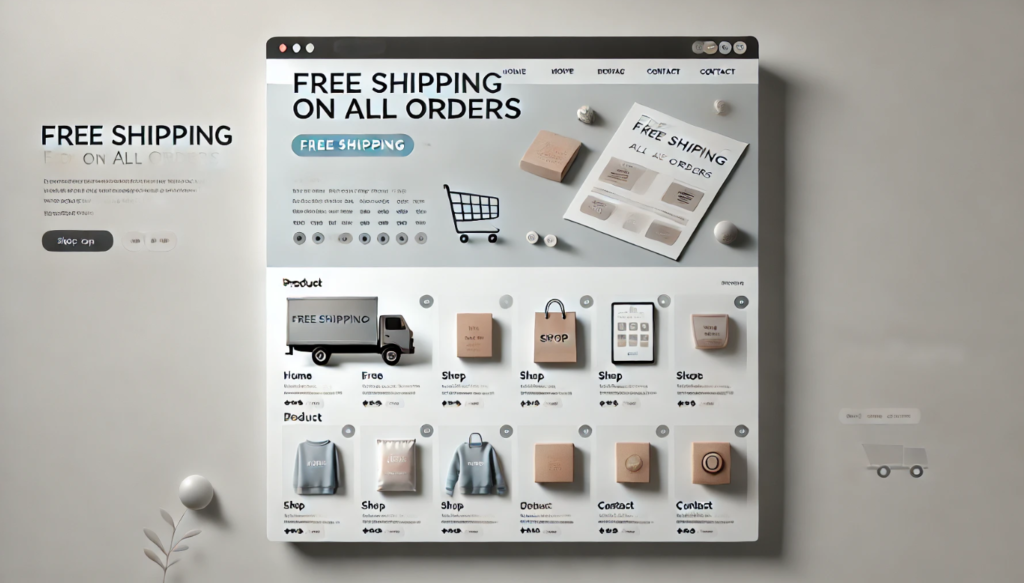Meeting The Demands Of Fast And Free Shipping In E-Commerce
23rd October 2024

Fast and free shipping has become a cornerstone of success in e-commerce with 75% of consumers prioritizing it when making purchasing decisions. Offering this service presents significant challenges, however, from rising operational costs to balancing customer expectations with profitability.
In this article, we explore these hurdles and the strategies businesses can employ to meet growing demand for fast, free shipping while maintaining operational efficiency.
The Psychology of Free Shipping
Free shipping has a powerful impact on consumer behavior. In fact, roughly half (48%) of consumers abandon their shopping carts at checkout when faced with unexpected shipping fees. The word “free” creates an immediate sense of value, reducing friction in the buying process and increasing the likelihood of purchase.
The “Amazon effect” has further solidified this expectation.
Amazon’s model of offering free shipping as part of its Prime membership has raised consumer standards. Today, customers anticipate free shipping from all online retailers, pressuring smaller businesses to meet this demand without sacrificing profitability.
The Challenges of Offering Free Shipping
You understand the importance of free shipping — most retailers do. But offering it comes with substantial challenges that make it far from automatic:
• Rising operational costs, especially due to inflation, are a major obstacle. Fuel prices, labor shortages and packaging costs continue to climb, pushing profit margins to the brink.
• Balancing profitability with customer satisfaction is tricky. While consumers expect free shipping, offering it can eat into profits, forcing businesses to raise prices or set minimum order thresholds.
Smaller retailers also struggle with the logistical challenges of meeting fast shipping expectations. Without the resources of larger e-commerce giants, staying competitive becomes much more difficult.
Strategies for Implementing Free Shipping
Retailers can adopt several strategies to offer free shipping without sacrificing profitability. Here are several proven approaches:
• Threshold-based free shipping: Encourage customers to spend more by setting a minimum order value to qualify for free shipping. This boosts average order values, helping offset shipping costs.
• Membership and subscription models: Offer free shipping as part of a subscription service, such as Amazon Prime. This generates recurring revenue and strengthens customer loyalty.
• Optimizing shipping and fulfillment: Use efficient packaging to reduce dimensions and lower shipping costs. Implementing a conveyor sorting system helps streamline operations. Zone skipping can also consolidate shipments, reducing the shipping distance and cost. Negotiating better rates with carriers based on shipping volume is another effective way to cut expenses.
• Leveraging data analytics: Use customer data to optimize free shipping strategies. Analyze purchase patterns, average order values and shipping costs to tailor threshold-based free shipping offers. For instance, if data shows customers often abandon carts just below a certain price point, adjust your free shipping threshold accordingly.
• Setting expectations: Transparency is key, with 74% of consumers expecting to see shipping costs before purchasing. Additionally, educating customers on delivery times and potential delays helps manage expectations and maintain customer satisfaction.
• Offer in-store pickup: Provide buy online, pick up in-store (BOPIS) options. This eliminates shipping costs for local customers while driving foot traffic to physical stores. It’s a win-win strategy that can help offset the costs associated with free shipping for other orders.
By combining these strategies, businesses can offer free shipping in a way that meets consumer demands while protecting their bottom line.
Conclusion
As inflation and rising operational costs continue to challenge e-commerce, businesses must find creative ways to maintain free delivery without compromising profitability. Meeting consumer demands for fast and free shipping will remain essential, and companies that can balance cost control with customer satisfaction will thrive.
Adapting to these pressures and keeping a close eye on shifting trends in consumer behavior will be critical to staying competitive in the ever-evolving e-commerce landscape.
Read Similar…
Fulfilment Service gets Robots to Boost Warehouse Efficiency

